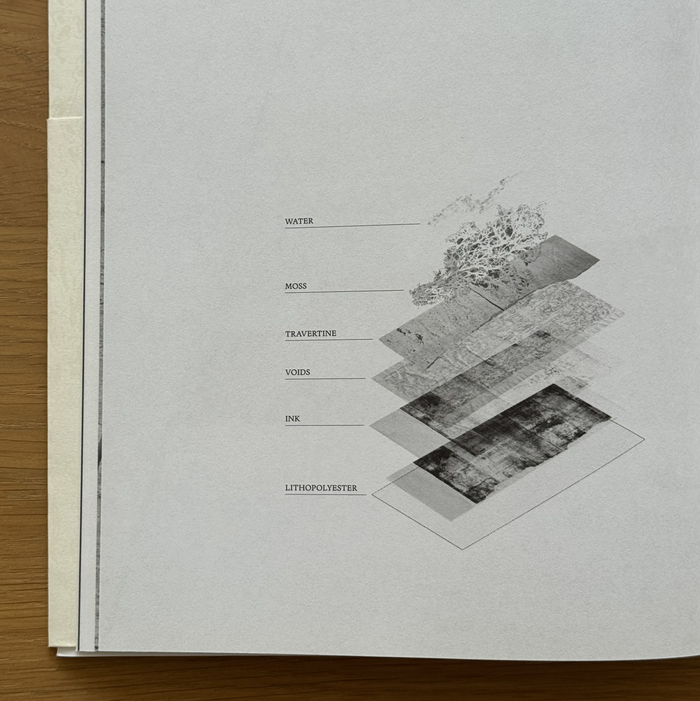Inviting Life by Stella Rahola Matutes, Roger Paez

License: All Rights Reserved.

The book Inviting Life uses Terza Reader to help tell the story of how the students of the Master’s degree in Ephemeral Architecture and Temporary Spaces at Elisava explored the changes that transform materials by natural effects from the study of travertine slabs.
Description from Stella Rahola:
Mies van der Rohe Pavilion
2021–2023The students of the Master’s degree in Ephemeral Architecture and Temporary Spaces of Elisava, led by professors Stella Rahola Matutes and Roger Paez, propose a re-reading of Ludwig Mies van der Rohe and Lilly Reich’s Barcelona Pavilion based on its constituent materials.
Following the project ‘Beautiful Failures’ (2019-2021) – which questioned fragility and vulnerability from the two most delicate materials of the Pavilion’s construction: glass and travertine – in this second part, ‘Inviting Life (2021-2023), we explore the changes that transform materials by natural effects from the study of travertine slabs.
The growth of mosses and lichens on the Pavilion’s stones is often interrupted by maintenance tasks that seek to give the Pavilion an aspect of invariability that corresponds to its mythical and prefixed image. The effect of the garden’s biotope on the Pavilion’s materials and the links with other organic agents create an imbalance, a tension, which can produce a change because matter is never stable.

License: All Rights Reserved.

License: All Rights Reserved.

License: All Rights Reserved.

License: All Rights Reserved.

License: All Rights Reserved.

License: All Rights Reserved.

License: All Rights Reserved.

License: All Rights Reserved.

License: All Rights Reserved.

License: All Rights Reserved.

License: All Rights Reserved.
This post was originally published at Fonts In Use